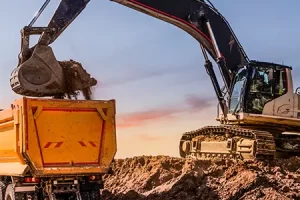The trucking and busing industries face several headwinds in 2023. The good news is that nearly all of them can be mitigated at the fleet level with existing telematics solutions.
- Commercial Driver Recruitment and Retention
American Trucking Associations reports a shortage of 80,000 truck drivers. That number is expected to increase in 2023, and could double by 2030. The U.S. Census Bureau reports that 30.3 percent of the industry’s driver workforce is over 55 years of age. An ATRI survey found that 39 percent of respondents believe the industry’s best strategy for reducing the driver shortage is to focus recruitment efforts on younger adults.
As it stands, driver recruitment is facilitated by easing the driver’s administrative burden as much as possible. Telematics technology is a front-line solution towards accomplishing that goal. Younger adults are more receptive to, and adept with, technology than older drivers.
Recruiters that emphasize the use of fleet management technology will have distinct advantages over competitors.
- Lawsuit Damages
Commercial truck companies are getting hammered in court cases.
The National Safety Council data on large truck accidents is mixed, yet commercial truck companies are being hammered in court cases.
The NSC reports that in 2020 (the most recent year available), 4,842 large trucks were involved in a fatal crash, a 4% decrease from 2019 but still a 33% increase since 2011. The involvement rate per 100 million large-truck miles traveled is down 5% from 2019, but up 18% since 2011. Since 2016, the number of trucks involved in fatal crashes has increased 5%.
A total of 4,965 people died in large-truck crashes in 2020. The number of deaths decreased 1% from 2019 but is still up 31% since 2011. The majority of deaths in large-truck crashes are occupants of other vehicles (71%), followed by truck occupants (17%), and non-occupants, primarily pedestrians and bicyclists (12%).
With 7 of every 10 fatalities occurring in other vehicles, the trucking industry is heavily exposed to costly liability settlements and civil lawsuits.
The incidence of so-called “nuclear verdicts” have skyrocketed. ATRI data shows exponential increases in volume of cases and the size of verdict awards. The average size of $1 million+ verdicts increased from $2,305,736 to $22,288,000 – an increase of 967% –between 2010 and 2018
Fleets can protect themselves several ways. Using Electronic Verified Inspection Reporting ensures that drivers are climbing into trucks that have been properly inspected and in compliance with regulations. That reduces the chance of a vehicle-induced accident. Using in-cab dual-facing video can exonerate a driver, by providing images that show what happened outside the cab and how the driver responded at corresponding moments. A tire pressure monitoring system ensures that tires are properly inflated and not subject to an inflation-related blowout which might result in an accident.
- School Bus Driver Shortages
The issues that exist with commercial fleets in regards to driver shortages exist with school buses also. Besides using the same solutions to enhance recruitment and retention, school districts have additional solutions to solve some unexpected problems.
With driver shortages comes the necessity to alter or double-up school bus routes. That can create chaos in a household filled with kids. When parents expect a school bus to show up and it doesn’t, especially if they have kids scattered across different schools depending on age, parents and kids both get off to a bad start for the day. Children need routine, especially the smaller ones.
Rather than call up the district and ask where the bus is located and when it will arrive, districts should provide parents with the MyView app, which allows them to see their child’s bus at all times. Districts can also add ZPass. This system requires riders to scan a passive RFID card to a reader inside the bus door as they board and exit.
Every year brings challenges to our industries. Fortunately, every year also bring new and refined solutions that address these challenges.







